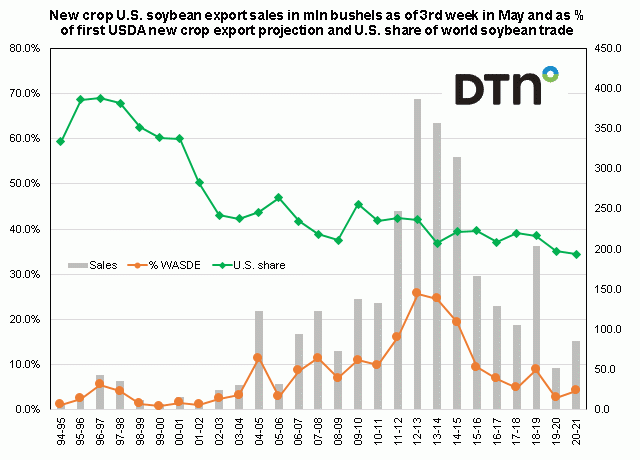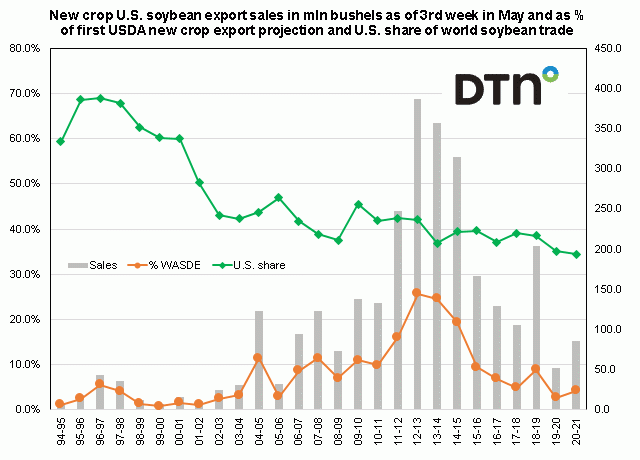Fundamentally Speaking
New Crop Soybean Sales as Percent of First WASDE Projection
The USDA chopped soybean exports for this season by 100 million bushels (mb) in the WASDE report earlier this month, and another downward revision may be necessary if sales do not pick up soon.
This appears wholly dependent on the pace of Chinese purchases over the next few weeks and even if some sales were consummated, they most likely would be for fall delivery for the 2020/21 marketing year beginning September 1.
Both old and new crop soybeans sales however are being held hostage to U.S.-Sino tensions, now at a fever pitch after Beijing imposed new laws on Hong Kong to suppress subversion, secession, terrorism and other acts that might threaten China's national security.
P[L1] D[0x0] M[300x250] OOP[F] ADUNIT[] T[]
Add this to a number of contentious issues that have traders on edge that the whole U.S.-China Phase 1 trade accord goes kaput.
No market is more impacted by these ongoing fissures than soybeans as the USDA's sharp 375 mb increase in projected exports is predicated on increased soybean exports to the PRC with the U.S. taking market share from South America.
This graphic shows new crop U.S. soybean export sales in million bushels as of third week in May on the right hand axis.
This figure as a percent of the first USDA new crop export projection is plotted on the left hand axis along with the projected U.S. share of world soybean trade.
This year's exports as of the third week of May for new crop are 85.7 mb which, other than last year's 52.3 mb, would be the lowest new crop sales on the books for this time of year since the 2008-09 season.
Given USDA's initial new crop export projection of 2.050 billion bushels, sales so far are only 4.2% of this total which, other than last year's 2.7% pace, would be the smallest share of new crop soybeans on the books as of the third week of May since the 2005/06 marketing year.
A record South American crop, a high-valued dollar vs. the Brazilian real and Argentine peso, retrenched world protein meal and vegetable oil demand in the wake of the COVID19 pandemic and of course the ongoing trade and security issues with China have all conspired to send this year's U.S. share of expected global soybean trade to what appears to be an all-time low of 34.5%, half the levels seen 25 years ago.
© (c) Copyright 2020 DTN, LLC. All rights reserved.






Comments
To comment, please Log In or Join our Community .